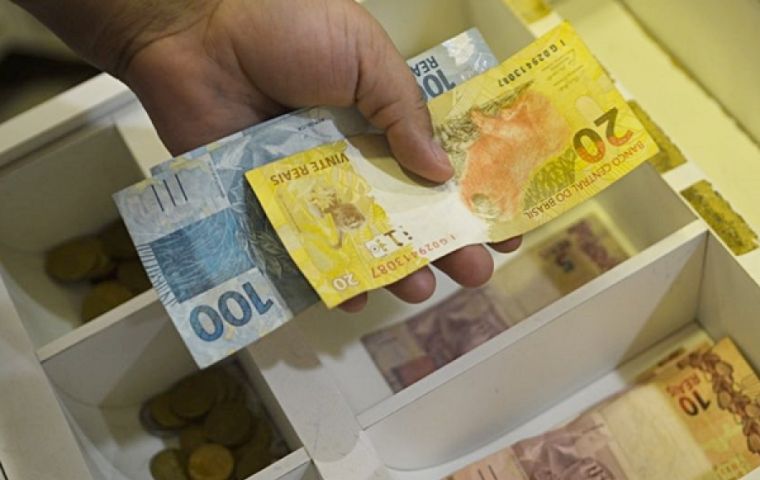MercoPress. South Atlantic News Agency
Number of Brazilians in debt on the rise
 For CNC President José Roberto Tadros, the Brazilian economy is going through a scenario of growing debt and default
For CNC President José Roberto Tadros, the Brazilian economy is going through a scenario of growing debt and default According to the monthly Consumer Indebtedness Survey (Peic) from the Brazilian National Confederation of Commerce of Goods, Services, and Tourism (CNC) released Tuesday, 78.5% of the families in South America's largest economy are indebted and behind in their payments, Agencia Brasil reported.
The percentage of households that reported having debts due advanced 0.2 percentage points (pp) in June. Those who consider themselves heavily in debt represented 18.5% of this total. It was the largest result in the historical series, which began in January 2010.
According to CNC, the increase in the number of indebted interrupted a sequence of four months of stability of the indicator.
For CNC President José Roberto Tadros, the Brazilian economy is going through a scenario of growing debt and default, which affects the consumption capacity of families. “The balance between the objectives of price stability and economic growth is a challenge to be pursued and that will be decisive for the resumption of the country's development,” he said.
The survey showed that, even with the increase in indebtedness in June, a month earlier than CNC estimated, the average share of income committed to debt registered the lowest percentage since September 2020, reaching 29.6%.
According to economist Izis Ferreira, responsible for the survey, this can be explained by the behavior of the income of part of the consumers. “This is the result of the improvement in the income of consumers who receive up to 10 minimum wages, which occurs due to the favorable dynamics of inflation that has been decelerating since the end of last year,” she noted.
The volume of default followed the forward movement of indebtedness in June. The total number of families with overdue debts reached 29.2%. Of the total number of consumers with overdue debts, 4 out of 10 entered June unable to pay commitments from previous months, the highest proportion since August 2021.
Izis Ferreira said, however, that the positive evolution of the labor market and the relief of inflation, which resulted in the improvement of disposable income, were not enough to remove consumers with debts that have been overdue for longer from default.
“The proportion of consumers with overdue debts grew again after six months of decline, as well as the contingent of those who say they will not be able to pay off overdue debts from previous months,” said the economist. For her, high interest rates continue to make it difficult to improve this picture.
Also growing was the number of consumers over 90 days behind in their payments, which in June reached 46% of the total defaulters. According to Ferreira, this means that out of 100 consumers with overdue debts, 46 are in arrears for more than three months. “And the proportion has been growing.”
The South and Southeast regions had the highest number of families in debt. The population of Minas Gerais is the most indebted among the States. Are 94.9% of the total. Following were Paraná, with 94.7%; and Rio Grande do Sul, with 93.9%. Mato Grosso do Sul had the lowest debt ratio in the country (59.1%), followed by Pará (62%) and Piauí (65%).
In all income ranges surveyed, the indebtedness increased in the semester, which indicates an “upward trend in the second half of the year.” Compared with the same period last year, the largest growth in the proportion of indebtedness was with consumers with a monthly income of 5 to 10 wages (2.1 percentage points).
“With the absorption of people with a lower level of education by the labor market and more robust cash transfer programs, a more expressive advance among low-income families has been contained,” added the Economist in the CNC document.
(Source: Agencia Brasil)




Top Comments
Disclaimer & comment rulesCommenting for this story is now closed.
If you have a Facebook account, become a fan and comment on our Facebook Page!